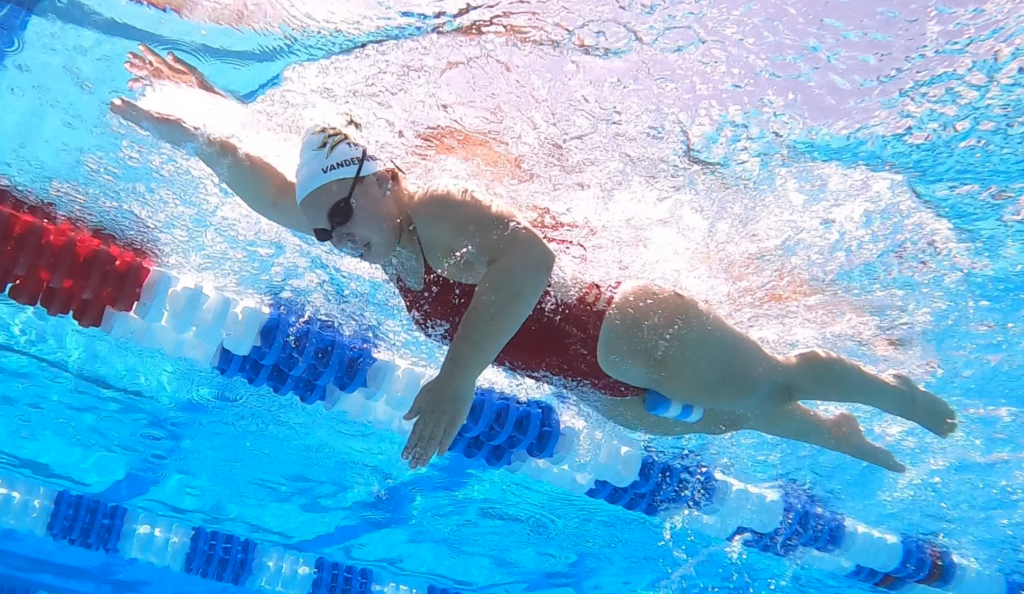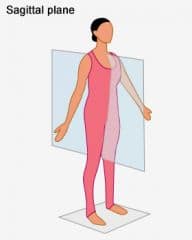Even though the Freestyle Stroke is the most practiced stroke, it is still littered with Common Mistakes NOT to Make. For the last blog post in our series on Common Stroke Mistakes, we’re going through 3 of the top and most fixable Freestyle mistakes. We’re also looking at what happens to your Speed and Power when you make these mistakes.
To read our blog posts on common mistakes made in Butterfly, Backstroke or Breaststroke, click on the stroke that you want to read and enjoy!
Let’s Get Started
Thumb Entry Means Less Efficiency
The Freestyle Stroke hand/arm entry is CRUCIAL to speed and power. That’s because it acts as the front of your stroke. Done right or done wrong, your entry can either slow you down OR set you up to propel you to greater speeds. We want to make sure you’re setting yourself up for maximum power during your pull.
A common mistake here is to enter with your thumb first. This is a problem because in order to move well through the water water, your forearm and palm needs to be anchored against the water. Entering with your thumb first will cause some dead space (or a time during the stroke when you’re not generating any speed) from your arms, until you get that forearm back and engaged against the water. OR, it will cause swimmers to pull thumb down, and therefore “slip” through the water and not pull nearly as much water as they could otherwise. Either way, you’ve either lost time or power.

That’s why we always recommend coaches teach a middle finger entry approach. The middle finger is the longest finger, so it makes sense that it would hit the water first. When your hand is in that nice, flat, level shape that we want to see, it’s the most “paddle-like”. You should also encourage your swimmers to CONTINUE to pull in the shape as they go under the body. Again, your hand acts as a paddle to your body, and this is the best way to get the most propulsion.
What’s the Pinky Finger Have to do with the Freestyle Pull? If you want more on the shape of the hand during entry in the Freestyle Stroke, click the link!
Crossing Over Means Less Power in Your Freestyle Stroke
If a hand entry is about setting yourself up for success, pulling down through the body is about maximizing that set-up. That’s why letting your arms cross over either on top of or underneath the body is a common Freestyle Stroke mistake.
Imagine that your body is split into halves with the line going straight down from the top of your head to in between your feet. The right half of your body line belongs to your right arm. The left half of your body line belongs to your left arm. Your arms CANNOT cross over that line onto the wrong half.

Instead, you want to see each arm staying on its correct side throughout the entirety of the stroke. If it doesn’t, you’re just losing time because you have to correct the positioning, OR you’re losing power because it creates another “slip” through the water.
A lot of this applies to Rotation during the Freestyle Stroke.
Head Up Means More Drag
I see this mistake over and over again with younger swimmers and people who are new to swimming in general (like my Crossfit friends I help coach). It makes sense. It’s not a completely natural thing to have your head physically in the water for that much time. In fact, it can be a source of panic for some swimmers as they get used to the sensation of breathing from their side. But, there’s a very good reason that all of the great swimmers keep their head perfectly positioned. That’s because your head is ALWAYS in contact with the water. In other words, your head is heavy and large (not insulting you! Just a fact for everyone), so it creates an enormous amount of drag. Perfectly positioned just means down towards the bottom with eyes looking ahead.
Fundamentals of the Freestyle Stroke: A Course for Coaches

When the head is up, it takes a lot more time and energy to move through the water. In other words, it makes you slower and more tired. That’s why I spend a lot of time with my younger swimmers and those who are new to swimming working on head positioning. If you can get your head position correct and comfortable, it will make a huge difference.
Coaches, I know that this can be a tiring common mistake to correct because of how often we need to remind our swimmers. But keep at it! As a swimmer starts to get more comfortable in the proper position, all of the times you have corrected them will be so worth it. Again, encourage them to keep their head feeling “down towards the bottom” with a slight tilt up with the eyes. If you want even more on this, check out this guest article I did with Swim Outlet a few years back on “Overcoming Your Bow Wave.”
Until Next Time,
Abbie Fish and the Swim Like A. Fish Team
